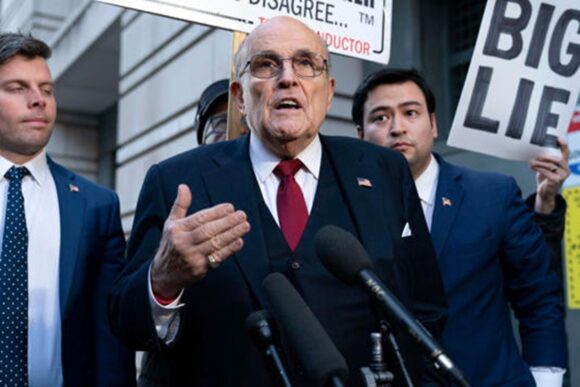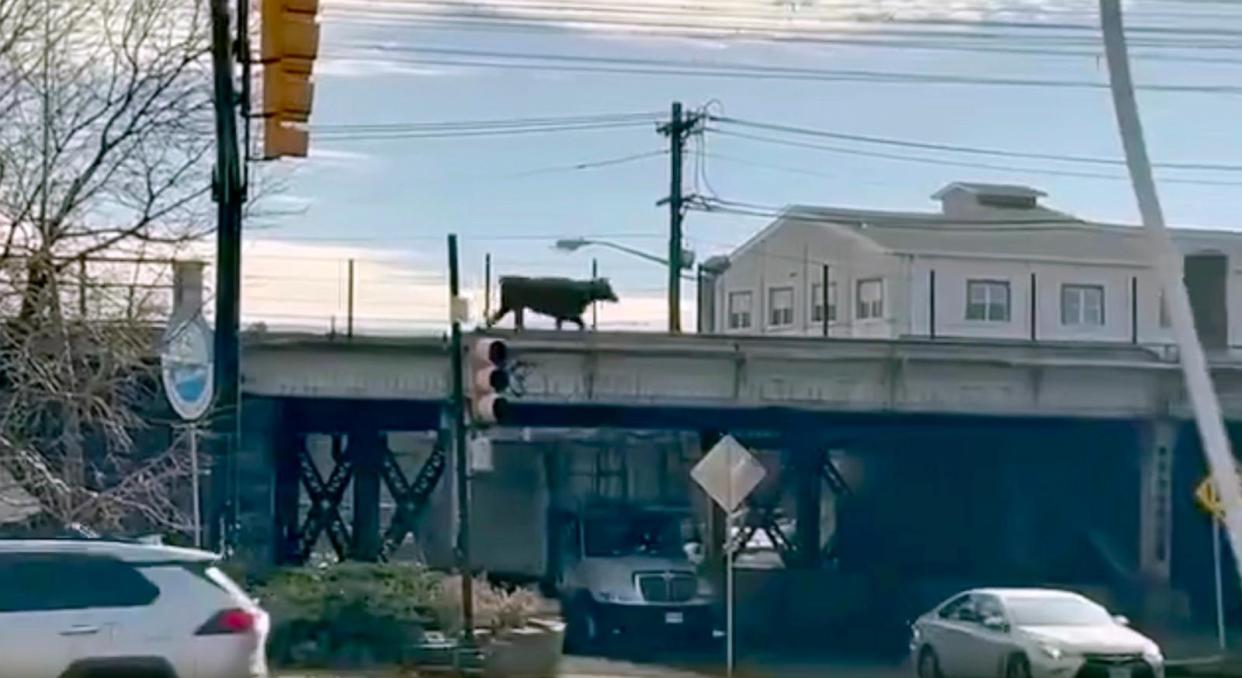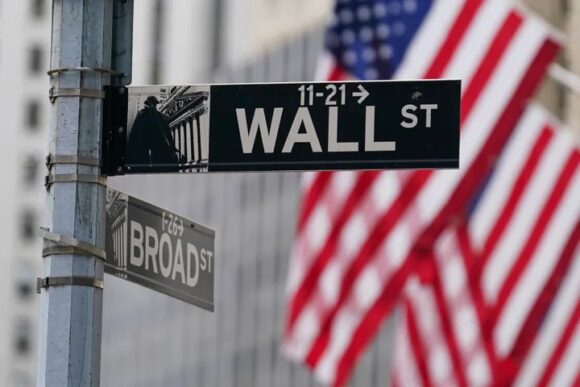 The Pyramid International Laboratory/Observatory climate station on Mount Everest has recorded hourly meteorological data for nearly three decades. – Franco Salerno/The Institute of Science and Technology Austria
The Pyramid International Laboratory/Observatory climate station on Mount Everest has recorded hourly meteorological data for nearly three decades. – Franco Salerno/The Institute of Science and Technology Austria
Dear Commons Community,
Glaciers in the Himalayas are melting rapidly, but a new report showed an astonishing phenomenon in the world’s tallest mountain range could be helping to slow the effects of the global climate crisis.
When warming temperatures hit certain high-altitude ice masses, it sets off a surprising reaction that blows robust cold winds down the slopes, according to the study published December 4 in the journal Nature Geoscience.
The warming climate creates a greater temperature gap between the surrounding air above Himalayan glaciers and the cooler air directly in contact with the ice masses’ surface, explained Francesca Pellicciotti, professor of glaciology at the Institute of Science and Technology Austria and lead author of the study. As reported by CNN.
“This leads to an increase in turbulent heat exchange at the glacier’s surface and stronger cooling of the surface air mass,” she said in a news release.
As the cool, dry surface air gets cooler and denser, it sinks. The air mass flows down the slopes into the valleys, causing a cooling effect in the glaciers’ lower areas and neighboring ecosystems.
With ice and snow from the mountain range feeding into 12 rivers that provide fresh water to nearly 2 billion people in 16 countries, it’s important to find out whether the Himalayan glaciers can keep up this self-preserving cooling effect as the region faces a likely rise in temperatures over the next few decades.
Glacier melt
A June report previously covered by CNN showed that glaciers in the Himalayas melted 65% faster in the 2010s compared with the previous decade, which suggests rising temperatures are already having an impact in the area.
“The main impact of rising temperature on glaciers is an increase of ice losses, due to melt increase,” said Fanny Brun, a research scientist at the Institut des Géosciences de l’Environnement in Grenoble, France. She was not involved in the study.
“The primary mechanisms are the lengthening and intensification of the melt season. They cause glaciers to thin and retreat, leading to deglaciated landscapes that tend to further increase the air temperature due (to) larger energy absorption by the surface,” Brun said.
That energy absorption at the surface is determined by something called the albedo effect. Light or “white” surfaces such as clean snow and ice will reflect more sunlight (high albedo) compared with “dark” surfaces such as the land that is exposed as glaciers retreat, soil and oceans (low albedo). In general, Brun said this phenomenon is interpreted as a positive feedback loop, or a process that enhances a change, but it is overall poorly studied and difficult to quantify.
At the base of Mount Everest, however, measurements of overall temperature averages appeared curiously stable instead of increasing. A close analysis of the data revealed what was really happening.
“While the minimum temperatures have been steadily on the rise, the surface temperature maxima in summer were consistently dropping,” said Franco Salerno, coauthor of the report and researcher for the National Research Council of Italy, or CNR.
However, even the presence of these cooling winds is not enough to fully counteract increasing temperatures and glacier melt due to climate change. Thomas Shaw, who is part of the ISTA research group with Pellicciotti, said the reason these glaciers are nevertheless melting rapidly is complex.
“The cooling is local, but perhaps still not sufficient to overcome the larger impact of climatic warming and fully preserve the glaciers,” Shaw said.
Pellicciotti explained that the general scarcity of data in high-elevation areas across the globe is what led to the study team’s focus of using the unique ground observation records at one station in the Himalayas“
The process we highlighted in the paper is potentially of global relevance and may occur on any glacier worldwide where conditions are met,” she said.
The new study provides a compelling motivation to collect more high-elevation, long-term data that are strongly needed to prove the new findings and their broader impacts, Pellicciotti said.
Treasure trove of data
Located at a glacierized elevation of 5,050 meters (16,568 feet), the Pyramid International Laboratory/Observatory climate station sits along the southern slopes of Mount Everest. The observatory has recorded detailed meteorological data for almost 30 years.
It’s those granular meteorological observations that Pellicciotti, Salerno and a team of researchers used to conclude that warming temperatures are triggering what are called katabatic winds.
The cold winds, created by air flowing downhill, usually occur in mountainous regions, including the Himalayas.
“Katabatic winds are a common feature of Himalayan glaciers and their valleys, and have likely always occurred,” Pellicciotti said. “What we observe however is a significant increase in intensity and duration of katabatic winds, and this is due to the fact that the surrounding air temperatures have increased in a warming world.”
Another thing the team observed was higher ground-level ozone concentrations in connection with lower temperatures. This evidence demonstrates that katabatic winds work as a pump that’s able to transport cold air from the higher elevation and the atmospheric layers down to the valley, Pellicciotti explained.
“According to the current state of knowledge, Himalayan glaciers are doing slightly better than average glaciers in terms of mass losses,” Brun said.
Glacier loss in Asia vs. Europe
Brun explained that in Central Himalaya, on average, the glaciers have thinned about 9 meters (29.5 feet) over the past two decades.
“This is much lower than glaciers in Europe, which have thinned of about 20 meters (65.6 feet) over the same time span, but this is larger than other regions in Asia (for example in the Karakoram region), or in the Arctic region,” Brun said.
Understanding how long these glaciers are capable of locally counteracting global warming’s impacts could be crucial in order to effectively address our changing world.
“We believe that the katabatic winds are the response of healthy glaciers to rising global temperatures and that this phenomenon could help preserve the permafrost and surrounding vegetation,” said study coauthor Nicolas Guyennon, a researcher at the National Research Council of Italy.
Further analysis is needed, however. The study team next aims to identify the glacial characteristics that favor the cooling effect. Pellicciotti said more long-term ground stations for testing this hypothesis elsewhere are virtually absent.
“Even if the glaciers can’t preserve themselves forever, they might still preserve the environment around them for some time,” she said. “Thus, we call for more multidisciplinary research approaches to converge efforts toward explaining the effects of global warming.”
Good news for once on climate change and global warming!
Tony
 Ken Jennings and Mayim Bialik (AP Photos, File)
Ken Jennings and Mayim Bialik (AP Photos, File)












